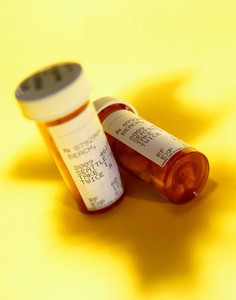Some of Europe’s major trade associations have expressed their concerns over fees being proposed by the European Medicines Agency (EMA) as part of new European Union (EU) pharmacovigilance rules.
European trade organizations worried about pharmacovigilance fees
Home/Policies & Legislation
|
Posted 07/03/2014
 0
Post your comment
0
Post your comment

The Association of the European Self-Medication Industry (AESGP, Association Européenne des Spécialités Pharmaceutiques Grand Public), the European Confederation of Pharmaceutical Entrepreneurs (EUCOPE), the European biotech industry (EuropaBio), the European Federation of Pharmaceutical Industries and Associations (EFPIA), and the European Generic medicines Association (EGA) have issued a joint statement calling for ‘balanced and transparent funding of the EU pharmacovigilance system’.
New pharmacovigilance legislation (Regulation (EU) No. 1235/2010 and Directive 2010/84/EU) was adopted by the European Parliament and European Council in December 2010 [1]. EMA is responsible for implementing much of the new legislation, which came into effect in July 2012. On 26 June 2013 the European Commission adopted a proposal for fees payable to EMA for carrying out these pharmacovigilance activities.
The associations point out that the fees, which could cost drugmakers as much as US$330,000 for each drug they make, have been significantly increased compared to the 2008 Commission initial impact assessment calculations accompanying the new pharmacovigilance legislation. They also point out that this has been done ‘without open and transparent communication of calculations supporting this increase’.
They add that ‘pharmacovigilance activities are part of the general mission of the EMA and of the National Competent Authorities to ensure public health’ therefore their cost, according to the associations, ‘should have been partly covered by community funding as established in the pharmaceutical legislation’.
The industry was actually expecting savings of Euros 145 million, as anticipated in the 2008 Commission Impact Assessment. The associations are therefore calling on EU decision-makers to present annual cost breakdowns and detailed information on performance indicators for the activities covered by the fees regime. They are also requesting that the financial overview include pharmacovigilance costs at both the European and national levels in order to gain a European-wide picture.
Related articles
EMA opens up access to reports on suspected drug side effects
EMA released pharmacovigilance guidelines for public consultation
EMA a step closer to implementing new pharmacovigilance rules
Practical guidance on new pharmacovigilance legislation
Reference
1. GaBI Online - Generics and Biosimilars Initiative. Pharmacovigilance legislation moves a step closer [www.gabionline.net]. Mol, Belgium: Pro Pharma Communications International; [cited 2014 Mar 7]. Available from: www.gabionline.net/Policies-Legislation/Pharmacovigilance-legislation-moves-a-step-closer
Permission granted to reproduce for personal and non-commercial use only. All other reproduction, copy or reprinting of all or part of any ‘Content’ found on this website is strictly prohibited without the prior consent of the publisher. Contact the publisher to obtain permission before redistributing.
Copyright – Unless otherwise stated all contents of this website are © 2014 Pro Pharma Communications International. All Rights Reserved.
Source: Europa, EuropaBio
Guidelines
New guidance for biologicals in Pakistan and Hong Kong’s independent drug regulatory authority
Canada poised to remove requirement for Phase III trials for biosimilars
ANVISA tackles 24-month backlog in biologicals post-registration petitions

Home/Policies & Legislation Posted 10/10/2025
US EO: delivering Most-Favored-Nation Prescription Drug Pricing to American patients

Home/Policies & Legislation Posted 03/10/2025
Uruguay to establish independent AUVISA drug agency for healthcare reform

Home/Policies & Legislation Posted 17/09/2025
The best selling biotechnology drugs of 2008: the next biosimilars targets







Post your comment